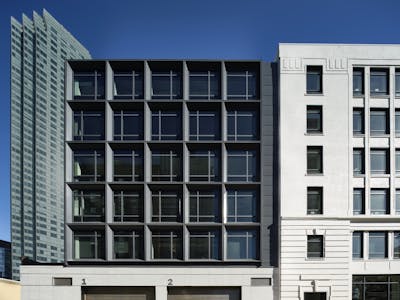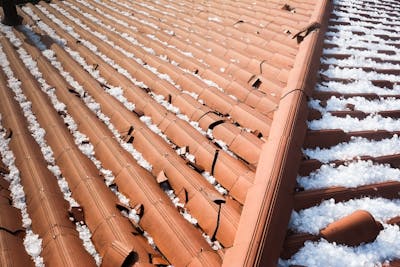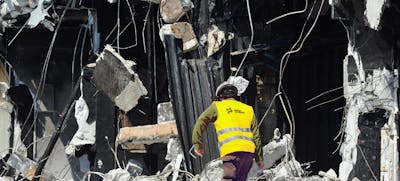This article identifies the primary causes of engineering failures, defines proactive versus reactive maintenance, recognizes the reasons for deferred maintenance, and identifies the risks related to deferred maintenance.
Key Takeaways
- Regular maintenance of a structure is critical not only to the health of the building, but also to the bottom line of the building’s owner
- Long-term deferred maintenance can result in catastrophic failure
- The best strategy to ensure the durability of existing structures is a life cycle cost analysis using proprietary software
Overview
Regular maintenance of a new or existing structure is critical not only to the health of the building, but also to the bottom line of the building’s owner. All too often, deferred maintenance results in excessive costs to restore structural integrity and serviceability. In some cases, long-term deferred maintenance can result in catastrophic failure. Neither scenario is acceptable to the building owner. This articles speaks to the primary causes of engineering failures, defines proactive versus reactive maintenance, recognizes the reasons for deferred maintenance, and identifies the financial and safety risks related to deferred maintenance.
Causes of engineering failure
The primary causes of engineering failures are typically related to design flaws, material failures, construction deficiencies, deferred maintenance, or a combination of one or more of the previously mentioned reasons.
Proactive versus reactive maintenance
In regard to proactive maintenance versus reactive maintenance, the former includes regularly scheduled maintenance, which can lead to the early detection of issues and problems. As for the latter, maintenance is only provided when serviceability is compromised. This is detectable when the distress is usually severe, which can lead to astronomical repair costs. The longer maintenance is deferred, the more the structure deteriorates. In addition to high repair costs, the building is at risk of a structural failure that can lead to demolition.
Effects of deferred maintenance
Structural engineers are typically asked: “What are the reasons for deferring required maintenance for a structure?” The reasons include an inadequate maintenance budget, unqualified building staff to manage the maintenance process, the disruption of services due to maintenance may not be tolerated by the owners and/or tenants, an inadequate understanding of the long-term consequences related to the deferred maintenance of a structure, and a simple lack of planning by the structure’s owners.
A simple way to define the trickle-down effect of deferred maintenance is to examine David Tod Geaslin’s Inverse Square Rule for Deferred Maintenance, which says:
- If a part is known to be failing and the repair is deferred and the part is allowed to remain in service until the next level of failure, the resultant expense will be the square of the cost to repair the failed part.
According to the Inverse Square Rule for Deferred Maintenance, let’s examine the following hypothetical scenario. In a typical structure, a bolt that is missing in a beam connection may cost $100 to replace. If the bolt is not replaced and the beam that is supporting the floor remains in use, it causes overstress in the remaining bolts in the connection. Over time, the connection yields, and an engineering firm is dispatched to examine the structure, a contractor is hired to provide an emergency shoring system, and the floor is deemed unsafe until repairs are completed. In this scenario, the bolt that should have been repaired for $100 ends up costing the building owner $10,000.
This is the best cast scenario, now let’s look at the worst-case scenario.
The owner decides not to perform the $10,000 repair and the additional deferred maintenance results in a partial collapse of the floor. Additionally, personal injury or death occurs resulting in the loss of use of the space and legal expenses. The required repair cost was $10,000 and using Geaslin’s formula, the ultimate expenses incurred by the owner due to the second level failure totals $100,000,000 – this figure includes rebuilding of the collapsed floor, legal expenses due to personal injury or death, and the loss of use of the space. The resulting cost is the square of $10,000, which totals $100,000,000.
Case study
Taking a look at a real-life case study, let’s look at a post-tensioned concrete parking garage that suffered from deferred maintenance. Constructed in 1978, the cast-in-place concrete structure included unbonded post-tensioned pan joist framing. There was also a one-foot gap between the east side of the garage and the adjacent building.
In 2001, an engineering team was hired to conduct a full-scale review of the garage in regard to maintenance issues. The review found a distressed concrete column that had deteriorated due to long-term exposure to water. It was recommended that the water infiltration be addressed before repairing the column to provide for a more durable repair and mitigate the on-going concrete deterioration. The total estimated cost of the repair was $70,000. Unfortunately, the building owners opted to defer the repairs at the time.
In 2008 another review of the garage was conducted. By this time, the concrete column distress had accelerated significantly and had extended to all four levels of the garage while roof level joist framing adjacent to the column and the girders supporting the joists had also become distressed. Cracking and spalling in the overhead concrete pan joist framing on the roof level as well as distressed concrete and post-tensioned tendon corrosion at the roof joists were also observed. The total estimated cost of the repair was $700,000.
Ultimately, the source of the water infiltration was traced back to overspray from a roof level cooling tower and leaks from a Level 4 mechanical room.
Strategies to increase structure durability
There are various strategies to increase the durability of existing structures. These include periodic engineering assessments of structures to identify maintenance repair needs, preparation of repair documents, and implementation of specified repairs by a qualified restoration contractor. The best strategy would also include a life cycle cost analysis using proprietary software in order to determine the service life and life cycle costs of maintaining the protective waterproofing components of the structure. The life cycle cost analysis should also evaluate alternatives for protective waterproofing systems which could potentially enhance the durability of the structure. The software analysis can be used for a wide variety of new and existing structures including stadiums, parking garages, bridges, commercial buildings, and roads and runways.
Life cycle cost analysis provides knowledge of the concrete, environment, and structure. Furthermore, it provides the building owner peace of mind in regard to the maintenance, repair schedules, and costs related to new or existing construction.



